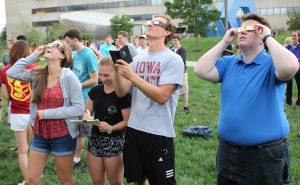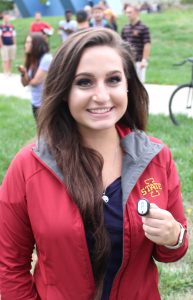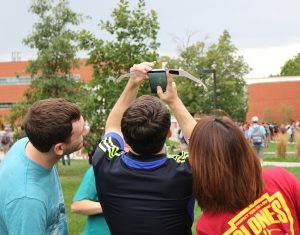
It was a case of thinking outside the box – with the “box” being the conventional classroom.
CBE professor Stephanie Loveland decided to turn the August 21 solar eclipse into a living laboratory of data collection for her Ch E 325 (CH E Laboratory I) class. And so, with notepads, clipboards, digital thermometers and eclipse-viewing glasses in hand, she and her Chemical and Biological Engineering undergrads spent their first class period of the semester observing the solar eclipse, and recording data about the event. “Rather than the usual first-day syllabus, I decided we’d head outside to take data about the eclipse and practice writing a report about it during the next class period – instead of just working with the usual random data,” said Loveland.

Despite the heavy cloud cover that got in the way of any unobstructed eclipse viewing, the sun was revealed a couple of brief times during the class observation, with one of the times being just four minutes before the maximum of the eclipse.

In fact, the cloud cover will be used as an example of “confounding data” when it is analyzed by the students. Using digital thermometers, they took note of the temperature drop that occurred during the eclipse, coming up with a decline of about seven degrees. But, as Loveland will ask, how much effect did the clouds have on the temperature drop, as opposed to simply the eclipse alone?
Though the clouds nearly won the day, Loveland is hopeful the students enjoyed a break from the norm, and enjoyed the chance to shine a different light on the subject of data collection.